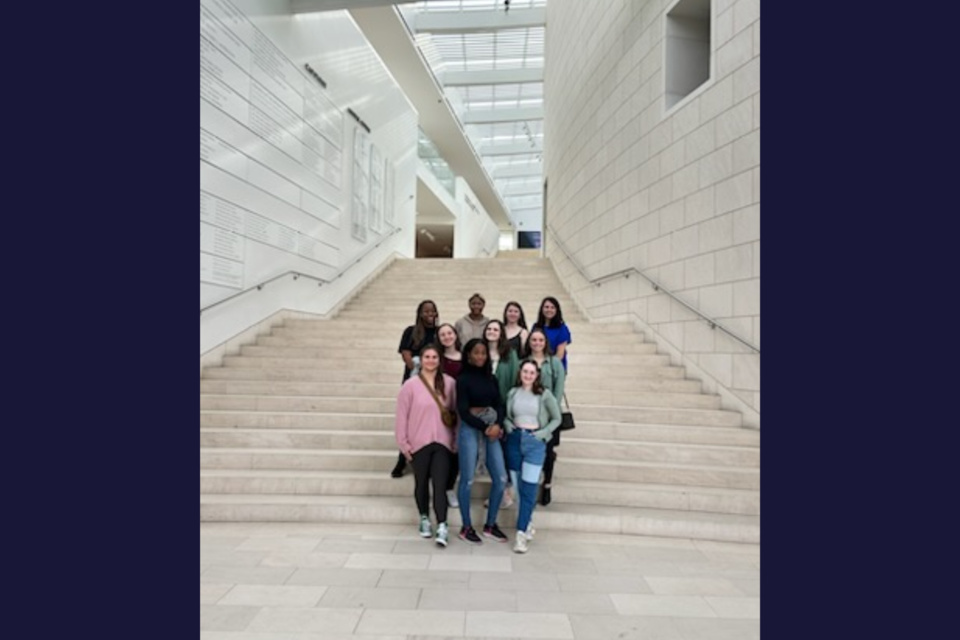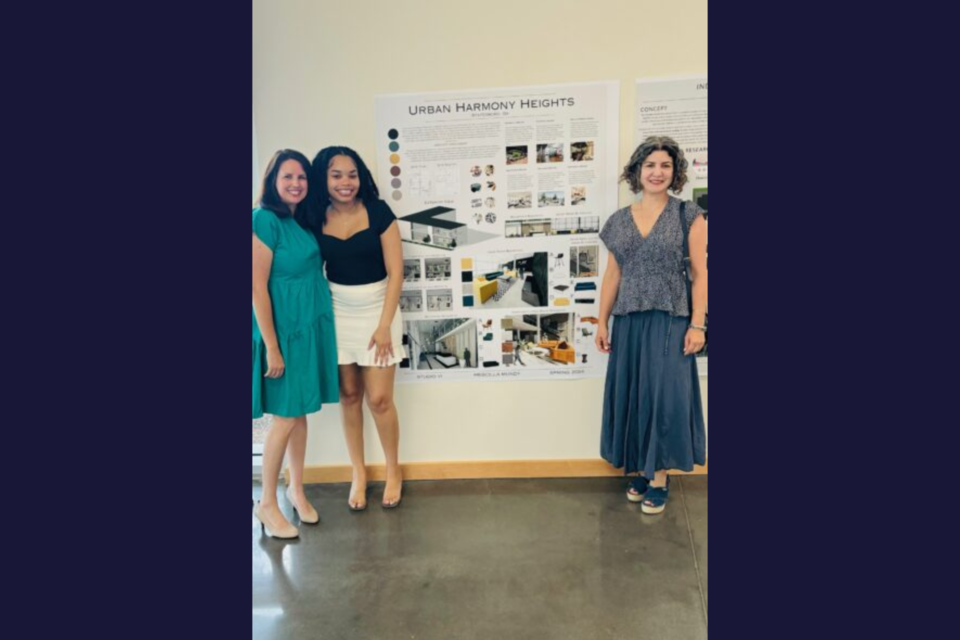Erica Bartels’ passion for design and teaching has found its home at Georgia Southern University, where she began lecturing in 2020. Drawing on her extensive experience in the industry, she encourages her students to appreciate every aspect of their environment through the critical eye of interior design and develop other skills vital to their success as future designers.
Question: What is your background in interior design?
Answer: Since earning my undergraduate education in interior design at Mississippi State University, I’ve worked in commercial interior design, specifically of financial institutions; multi-family housing, such as condo-leasing offices and model apartments; and at a traditional architecture firm doing civic and community projects. In 2010, I decided to research a teaching career because I loved the interior design profession and had recently read a few publications stating that there would be a shortage of faculty in interior design. After obtaining my graduate degree from the University of Nebraska, I taught adjunct computer graphics technology classes at the University of Arkansas-Fort Smith until 2014, when I acquired my first full-time teaching position in interior design. I quickly found that my love was with students and that teaching felt like part of my calling.

In 2020, I learned of a position at Georgia Southern University in the Interior Design program within the School of Human Ecology. I was impressed with the school, the facilities, the accredited design program and its potential. My family and I have lived in Statesboro ever since and love the community here! My husband works in the Office of Business and Finance on campus and also enjoys assisting athletics via instant replay for many of the University’s sports, and our oldest son has been a dual enrollment student for two years. Georgia Southern is a special place that we feel grateful to be a part of.
Q: What inspired you to pursue a career in interior design, and why did you decide to transition into teaching?
A: I really feel like teaching is a service. When I was considering pursuing a career in academia, I was at the point in my career where I wanted to give back to the industry, profession and college-age students in a meaningful way. Georgia Southern Interior Design is one of only six programs in the state that is distinguished by the Council for Interior Design Accreditation in Georgia. It has great students, faculty, facilities and departmental support from the School of Human Ecology.
Q: What excites you about interior design?
A: It is never boring. Working in a design firm, even in a traditional office setting, a designer might have five projects going at once: One in the programming/pre-design phase; one in schematic design; one they are drafting construction documents for; and two that are under construction, requiring site visits and questions from the field.
To add to that, there is something special about walking through a space you had a part in bringing to life.
Q: What are some of the challenges facing interior designers today?
A: Much like the economy of building construction ebbs and flows, project types, such as hospitality, can also ebb and flow with availability. However, the industry remains strong. Health care design is a particular specialization that remains constant, along with private housing. Today, educators are also discovering how to embrace Artificial Intelligence and bring this into the design process at early phases of ideation while keeping in mind that the design profession will always be human-centered.

Q: What excites you about teaching?
A: I enjoy working with young adults in a transitional, yet exciting, stage of life, teaching them specific skills and seeing them grow as people and emerging professionals. Professors have the opportunity to wear many hats: mentor, educator, collaborator and practitioner.
Q: What takeaways do you hope students gain from your classroom?
A: First, I want students to know and feel that they can succeed. I want them to hear and believe that my goal is for them to learn specific objectives, skills and knowledge in each course, and to excel. I focus on creating a positive atmosphere inside of the learning space in which I remain open and objective to each person.
My teaching method is a blend of practical application with experiential learning. The magical thing about studying the built environment is that it is all around us. Interior designers have a major role in creating space, from classrooms to dorms to restaurants and shopping, to name a few. For this reason, my students and I walk around our building discussing each element, and I encourage them to do this outside of class, as well. Each task and phase of the design process is something they will quite likely encounter as a design practitioner, and I aim to assist with their professional preparedness in the short time that I get to work with them.
Q: How do you challenge students to engage outside of the classroom?
A: I enjoy assisting students in a mentorship capacity as they search for an internship and then an entry-level position. It is a joy to see students prepare their application materials and engage with potential employers, and then share the good news of a first position gained. Some students continue to do freelance work after their internship or at the start of their own business and ask advice on proposal documents and invoicing new clients; as I continue to practice hospitality design in the summer months, I’ve been able to share my approach with students.
Additionally, the Interior Design program and faculty encourage students to join professional organizations, such as the American Society of Interior Designers and the International Interior Design Association, to network and attend events in our region.

Q: Any advice for aspiring interior designers?
A: Students enter into interior design education for a variety of reasons, such as artistic and creative interests, space planning and residential design, commercial interiors with a variety of specializations, or technical details and software abilities. I would advise potential students and aspiring interior designers to lean into those interests. There are many opportunities in the profession. See where your career takes you!




